Capsule Review: 1992 Toyota Pickup 4×4
Schadenfreude recently brought the elder Niedermeyer out of his summer semi-retirement, and for the most part, it’s a consistent inspiration for much of our content here at TTAC. But as natural and healthy as it is to laugh and learn from the mistakes of others, for some reason I’m just not feeling it today. Blame it, if you must, on a certain mellowness that settles in over the glorious course of an Oregon Summer. One Robert Farago always said that hate must come from a place of love, so in the interests of getting TTAC back in lean, mean fighting form, I’m going to indulge in the worst kind of of auto-writing love-fest: I’m going to tell you about how much I love my car. Except that it’s not a car, and it’s not actually mine…
Regular readers of TTAC will be aware of the embarrassing fact that their humble editor is not, in fact, a car owner. Truly regular readers might look to the amount of content I write at TTAC (and estimate the amount of behind-the-scenes work that’s done to keep things humming here) and correctly conclude that I don’t have a whole lot of time to spend behind a steering wheel. But the real reason there’s no sharp set of wheels gracing the Niedermeyer driveway is that a good friend recently moved to Korea to teach English for a year, and left her 1992 Toyota Pickup in my care.
This friend had sold or given away nearly every other belonging in preparation for her overseas adventure, but her attachment to the truck was (and is) so passionate that I would have gladly cared for it under any circumstances. As it so happened, this particular truck is a highly intriguing machine: a 4×4 Xtracab model, with four-wheel drive, the 22R-E four-cylinder, and a five-speed manual transmission. On paper it’s exactly the kind of truck the US market largely doesn’t offer anymore, and it’s just the kind of truck I would buy if I were in the market.
Within the first several local errand trips, I felt a strange and sudden connection to the battered red Toyota that at first I couldn’t properly explain. Then, somewhere between second and third gear, I realized that I was driving a hybrid of some of the most influential vehicles in my life. The rumbly grumble of the long-stroke four-banger, and long-throw, small-knobbed gearswitch were straight out of my first car, a 1980 Mazda 626. The squeaky bounce of the suspension, the wind noise, the spartan interior aesthetic and the lazy pace all reminded me of an early-nineties update of my father’s old Ford work truck. Would it be possible to write about this melding of these two most personally evocative vehicles without writing an entire Auto-biography of my own?
Instead of following my father’s example, I decided to retrace my own first automotive steps and head out to the wild sagebrush country of Eastern Oregon, where as an unlicensed middle-schooler, I first learned to drive. Though much has changed since dad and I took off for week-long “field trips” (I was homeschooled at the time) across the state’s empty half, the experience of bouncing across dusty roads, stopping in sleepy towns and camping in desolate spots remains the same. I now head east from Portland rather than Eugene, I no longer have to let dad drive when we get to a town, and my traveling companion is a beautiful architectural historian (and part-time automotive photographer) instead of, well, my dad. But the experience of exploring Eastern Oregon in an underpowered four-wheel-dirver still turns me into a carefree, curious kid.
Around town, the 22RE’s 142 lb-ft of torque pull the red Toyota away from traffic lights with gruff diesel-like rumble. But with only 112 horsepower on tap, things slow to considerably as we assault the Government Camp pass heading east over Mount Hood. Dropping out of the long fifth gear helps, but with so little power being generated at the top of the RPM band, downshifting to 3rd makes more noise than additional power. As long as the long-stroke engine isn’t bogging down though, it will slowly pull diesel-like up the rev-band until some high-end thrash signals that the torque party is over. It happily grumbles along at the speed limit, but starts feeling forced around 70. No worries. With the city behind us, the Toyota propels us into the pace of rural life.
Between the towns of Antelope and Fossil runs a winding bit of tarmac that may be one of the best driving roads in Oregon, and the perfect spot to test the Toyota’s handling. I push into the first several corners, braking hard, leaning into the turn, and applying power early in order to keep the pickup’s momentum up. With the 4WD shut off, there’s a light, crudely engaging quality to the chassis that just screams for a loose road surface, but the road surface here is too good for the Toyota’s soft suspension and lifted chassis. A few corners later, we’re stuck behind an improbably slow caravan of Harley riders, and once again, we uncomplainingly settle into a sedate pace.
After checking out Fossil’s timewarp Cruise-In, we head into the hills before winding South through a creek draw that eventually widened to meet the John Day River. Our destination for the evening was a quiet BLM boat launch on the John Day, and getting there involved about ten miles of narrow gravel road clinging to the side of the river valley, followed by a short, steep, bumpy drop down to the riverbed. The Toyota’s tall stance provide good poise and excellent visibility over the gravel, without ever making it feel clumsy the way a full-sizer would have on the narrow track. On the highway, the 22R-E’s lack of top-end pull is the major limiting factor. On these rough gravel roads, however, the Toyota wants to keep playing even after you’ve thoroughly scared yourself… but then it would probably survive the two-mile-tumble better than you too.
We pull up right at the river’s edge, make a bed in the truck’s bed, and watch the sun set over the Cascades. We giggle at the thought of two heterosexuals huddling for warmth under a “Keep Portland Queer” bumper sticker, and fall asleep under the stars. We sleep like babies, and are awakened by the trilling of red-wing blackbirds.
The rest of this particular trip is encased in the same gauzy fog that swaddles our fondest childhood memories. Crawling effortlessly up steep, rutted, rock-strewn roads in low-range, stopping for gas and a soda in small towns with names like Monument, and sliding around gravel Forest Service roads all run together into a happy blur. None of which reveals much truth about the red Toyota, besides the fact that it’s a simple, rugged, capable machine that keeps up with on-road traffic and comes alive in the dirt, gravel, mud and rocks of the Oregon outback.
If we’d wanted to tow 3,500 pounds along on our trip, our owner’s manual claims it would have been possible… but instead we only took what could fit in the tiny rear jumpseats, and were no worse off for it. Over 600-ish miles of varied speeds, terrain and driving styles, we averaged 20 MPG on the nose from the (recently-rebuilt) 22R-E… not bad considering the EPA rated the thing at 17/20 back in the day. And when you find out that the spiritual descendent of this truck, the four-cylinder, manual transmission, 4×4 Tacoma gets only 17/22 from the EPAs new test, it’s clear that this portion of the compact truck market really hasn’t changed much in 20 years. Well, at least not for the better.
Though these pre-Tacoma Toyotas are not exactly cheap on the used market, my time with this one has made it hard to see why anyone would drop $20k on a similarly-equipped (though much bigger and more plush) new Tacoma. Sure, the old truck will whistle on the freeway, lean in the bends, and have no idea how to interface with an iPod, but it also has more of the mechanical approachability of an old-school American pickup (and more reliability). It’s plastic interior may have no pretense of “styling” but it will shrug off even a freak window-down rainshower without leaving a trace.
In short, this old Toyota pickup proves that when relentless progress starts to feel a bit pointless, sometimes the best thing to do is regress. It’s certainly worked for me, as I’ve found that regular weekend trips to the driving grounds of my youth leave me refreshed and ready for the grueling TTAC work week. And if it works for me, why can’t it work for the automakers? At this point, Toyota should look back to the almost dour, spartan quality of its not-so-distant past, and remember what it feels like to be young and hungry again.To build something that impresses not with a bloated spec-sheet, but with an undeniable sense of simplicity, purpose and tangible quality. Something that offers real freedom instead of just more of everything for the sake of keeping up with the next guy. Something like the red pickup truck that I wish I didn’t have to give up at the end of the year.
More by Edward Niedermeyer
Latest Car Reviews
Read moreLatest Product Reviews
Read moreRecent Comments
- EBFlex This doesn’t bode well for the real Mustang. When you start slapping meaningless sticker packages it usually means it’s not going to be around long.
- Rochester I recently test drove the Maverick and can confirm your pros & cons list. Spot on.
- ToolGuy TG likes price reductions.
- ToolGuy I could go for a Mustang with a Subaru powertrain. (Maybe some additional ground clearance.)
- ToolGuy Does Tim Healey care about TTAC? 😉





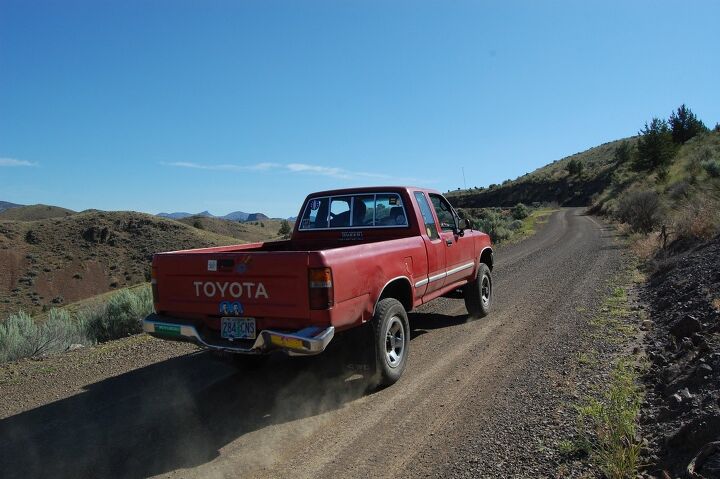









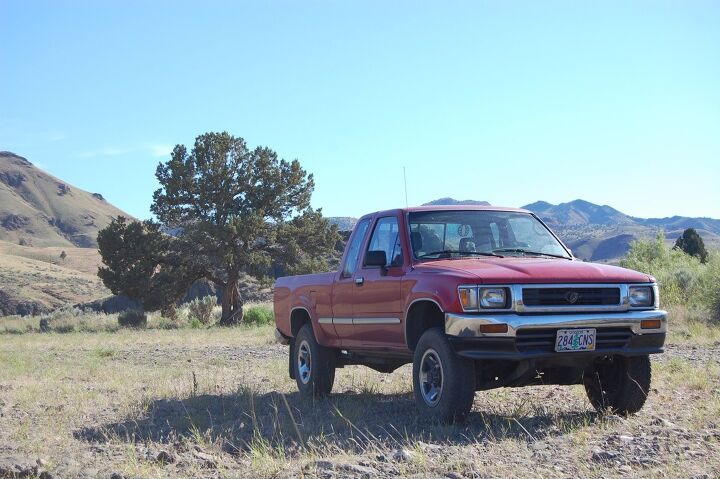

























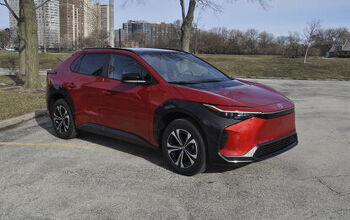
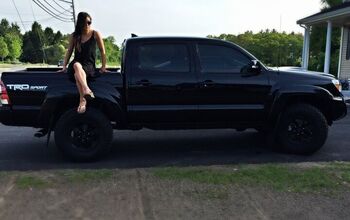
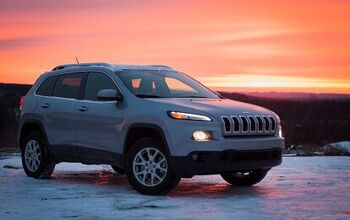

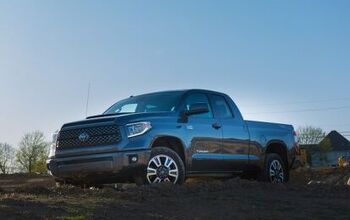





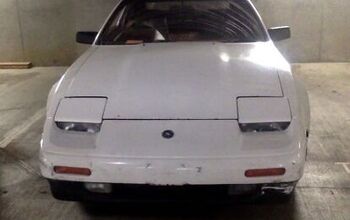




Comments
Join the conversation
Too bad the 89-94 SR5 model with the 8 way adjustable driver's seat , factory sunroof , and basically overall great interior didn't come with the four banger . I had a 94 SR5 and that 3 liter V6 was one of the worst engines Toyota ever made !
i just bought this exact model, except mine is blue with a cap. I've owned two previous Toyota trucks, an '89 and a '90, both 3vze 6 cylinder, great trucks for life here in Alaska! But my '92 22re 4 banger beats them both hands down, perfect for snow driving, which around here is for 5 1/2 months out of the year, put about 300 lbs of sandbags in the rear with metal studded tires, and I'm sliding perfectly around the corners and stopping on a dime even when 'newer' cars and behemoths are hitting easch other or going off the road. I got it for 4K with 118,000 miles and had been kept up perfectly by a previous owner. My last one I drove to California, and while I was going through British Columbia, a Toyota truck fan told me I could get 8 to 9K Candian for this kind of ride. I'll never get rid of my blue wolverine!